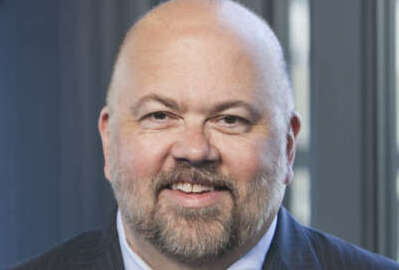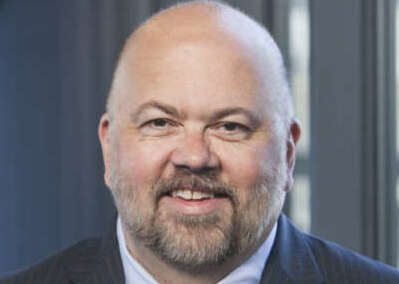
White House proposals for civil service reform: What they missed
Few people will argue that the civil service needs no reform. The job classification and pay systems are outdated, the hiring process is terrible and employee...
This column was originally published on Jeff Neal’s blog, ChiefHRO.com, and was republished here with permission from the author.
The White House proposed a number of changes that would dramatically reshape the federal workforce and how federal workers are compensated. My first post in this series provided the list of proposed changes. The second addressed what they got right. This post will look at what they got wrong and what is missing from the proposed reforms.
Few people will argue that the civil service needs no reform. The job classification and pay systems are outdated, employee accountability is an issue that troubles both outsiders and government workers, and the hiring process is terrible. Performance appraisal processes do little to identify truly outstanding or truly bad employees.
The White House proposals were spot on in several respects (see my last post), but they missed the mark on a few. Following are my views on the misses:
“Since Federal workers perform many essential functions, failures can chip away at the citizenry’s collective trust in Government.”
Recent surveys show that the American people have a generally positive view of most government agencies, and very positive reviews of quite a few. More often than not, failures in agencies are attributed to lack of political leadership, rather than the work of civil service employees. Congress and politicians in general do not enjoy high or even middling approval ratings.
“To better align with the private sector, the Budget reduces Federal personnel compensation costs, primarily the annuity portion.”
The White House proposal increases the employee contribution to the annuity portion of the retirement plan, shifts from a “High 3” to a “High 5” annuity calculation, and eliminates the FERS Special Retirement Supplement for employees who retire before becoming eligible for Social Security. Retaining any kind of defined benefit option is still a better deal than most private sector employees get. Those of us who are older remember a time when large employers offered pension plans. Employees would typically go would go to work somewhere with the idea of staying for the rest of their working lives. I wish that model still existed, but the economics of defined benefit plans, combined with a far more mobile workforce, make that unlikely to ever happen again.
The proposals to increase employee contributions and reduce benefits may be economically realistic, but they miss the opportunity to take a hard look at retirement security for federal workers and for American workers everywhere. If we are going to permanently shift the burden for retirement to defined contribution plans such as the Thrift Savings Plan, Individual Retirement Accounts, 401(k) and similar plans, it is time to rethink retirement options for everyone. Many retirement experts say most Americans have inadequate retirement savings. That is particularly true of lower income workers. Reviewing federal employee retirement benefits in that context might open the door for a broader look at options that could make a secure retirement available to everyone. That might mean higher tax-deferred contribution limits, a larger employer contribution, incentives for employers to fund retirement plans for their workers, or something else entirely. Simply cutting what is there does not start the debate that probably should happen. The White House proposal includes a recommendation to study creation of a defined-contribution only annuity benefit for federal workers. That should be expanded to address the larger issue.
“The Budget proposes to slow the frequency of these step increases, while increasing performance-based pay for workers in mission-critical areas.”
Most folks agree that the general schedule is an outdated pay system. Rather than scaling back on step increases, a better solution would be to rethink the entire job classification and pay system. Piecemeal fixes will do little to correct the underlying problem — that the general schedule is based on a late 1940s mostly clerical workforce that no longer exists. The interest in performance-based pay is also something many folks agree with. The problem is that today’s performance appraisal processes are typically not very credible. From overly generous ratings to infrequent manager feedback and performance goals that base everything on individual performance when we know that most work is accomplished in teams, the current appraisal process may not be adequate to serve as the basis for pay decisions. Any move to performance-based pay should be part of a comprehensive set of civil service reforms that are derived from a well thought out process.
“Federal jobs can take more than a year to fill. The job announcements remain a confusing cipher to applicants. The hiring process — which includes at least 14 steps — is cumbersome and frustrating for Federal hiring managers. As the nature of work changes, the Federal Government requires more term employees. Many individuals are interested in public service but not seeking a career in the civil service. Existing Federal hiring rules make term hiring as difficult as hiring a permanent employee. Another major hindrance to timely hiring is a massive security investigation inventory.”
This correctly identifies the problem, but what is missing is the solution. The federal hiring process is a mess and it needs to be fixed. Last year, I outlined the problems with the hiring process, along with a two-part set of solutions (click for Part 1 and Part 2) that could bring federal hiring into the 21st century.
The solutions suggested in the White House proposals are a mixed bag — some good, some incomplete, some missing the mark. I am concerned that implementing them without a comprehensive civil service reform strategy may aggravate some existing problems. For example, the Congressional Budget Office report cited by the White House says some higher graded and professional jobs are underpaid. Removing retirement benefits that make up a large part of the total compensation package, without addressing total compensation for those jobs, may actually make the pay disparity and the difficulty in filling them even worse.
The civil service is a complex system that affects more than the 2 million federal workers and their families. It also affects local economies in towns across the country where the government is a large employer. It also affects the ability of the government to carry out its many and varied missions.
Comprehensive civil service reform is something that was recommended by virtually every group that was involved in writing pre-election proposals for the incoming administration. It was a good idea before we knew who would win the election and it is still a good idea. To be credible, it must be formulated through an inclusive process that hears from all parties and is based on data. Both parties will put forth proposals based on ideology and political interests. Rather than a political process, I suggest the equivalent of the Hoover Commission — one of the most consequential reform commissions the government has ever seen — as a fully inclusive model for developing a new civil service framework. The Hoover Commission, officially known as the Commission on Organization of the Executive Branch of the Government, was appointed by President Truman and chaired by former president Herbert Hoover. Presidents Truman and Hoover were not known to be friends. In fact, Mr. Truman had made a number of disparaging remarks about Mr. Hoover. They overcame their partisan differences to work together, and in the process generated many recommendations that transformed government for the better. In the process they also became friends. A bipartisan, or even better — a nonpartisan — approach to civil service reform would ensure that federal workers are treated fairly, based on objective data, and that the American people get the civil service they need to carry out the people’s work.
Jeff Neal is a senior vice president for ICF and founder of the blog, ChiefHRO.com. Before coming to ICF, Neal was the chief human capital officer at the Homeland Security Department and the chief human resources officer at the Defense Logistics Agency.
Copyright © 2025 Federal News Network. All rights reserved. This website is not intended for users located within the European Economic Area.
Related Stories

Civil service reform is coming: What should it be?




